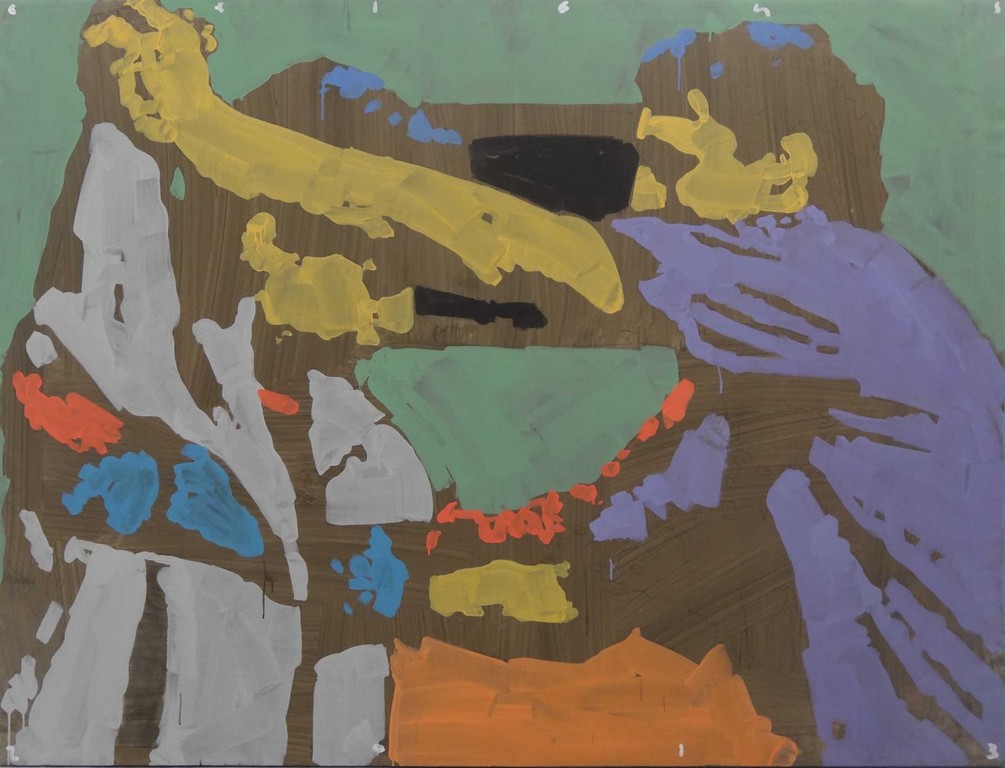 Favorite Shoes, 2013, acrylic on canvas, 190 x 148
Favorite Shoes, 2013, acrylic on canvas, 190 x 148 Rage, 2013, acrylic on canvas, 141 x 201
Rage, 2013, acrylic on canvas, 141 x 201 Escape, 2013, acrylic on canvas, 190 x 140
Escape, 2013, acrylic on canvas, 190 x 140 Lantern, 2013, acrylic on canvas, 170 x 180
Lantern, 2013, acrylic on canvas, 170 x 180 Pain, 2013, acrylic on canvas, 168 x 140
Pain, 2013, acrylic on canvas, 168 x 140  Peep, 2013, acrylic on canvas, 140 x 190
Peep, 2013, acrylic on canvas, 140 x 190  Forced to Dance, 2013, acrylic on canvas, 152 x 200
Forced to Dance, 2013, acrylic on canvas, 152 x 200 Basin, 2013, acrylic on canvas, 141 x 200
Basin, 2013, acrylic on canvas, 141 x 200  She is Drunk, 2013, acrylic on canvas, 141 x 200
She is Drunk, 2013, acrylic on canvas, 141 x 200 Mykola Bilous
MY NAME IS ROSETTA
18.10 - 07.12.2013
Continuing his own “serial in pictures,” Mykola Bilous introduces viewers to the eighteen-year-old Rosetta. She is the main heroine in the fourth film, directed by the Belgian Dardenne brothers. The plot is quite simple: living with an alcohol dependent mother, the girl tries everything possible to find a job. Based on the manifesto of "Dogma 95", with a close approach to documentary aesthetics, the operator haunts the heroine with a hand camera. Mykola Bilous, as a post-media artist, uses art technology to catch Rosetta in the "picture frame".
Such cinema quotes are interesting from both an analysis of the author’s image choices, which have a deeper sense of the frame, but also in terms of artistic and visionary ability to illustrate certain archetypes of consciousness. The broad brush strokes, vivid colors, composition, help to create an instant holistic perception of his paintings. From the first look, his work creates a photo flash effect. Images appear as if just out of the solute and still in the process of developing, this time not on photographic paper, but on canvas.
According to art historian Oksana Barshynova, these methods have "the analytical sides and tension to rethink the founding structure of film frame and light. He identifies the most generalized forms, with the possibility of their further abstraction. Moreover, Mykola Bilous tries to achieve the bright, laconic poster type image which does not simplify but intensify prototype". An interesting element of Mykola Bilous’ art style is the author's signature; as in a film cell, it frames the work at the top and bottom.
The result of six months of analyzing the film "Rosetta" was numerous sketches on paper and around ten big paintings on canvas. As always, the main theme of his work is the triad of "Life Death Love". In the language of the philosopher Bart, the main criteria of image selection is "punktum" – the sensual point in the emotional body of an artist, his personal semantic and cultural fields. For example, in the scene of Rosetta’s morning wash, the painter sees a hint of a Degas sculpture. Referencing the painting style of Delacroix, the artist uses color as an element of composition.
The main players within Mykola Bilous works have their own dialogue. From this perspective, young Rosetta could be an artist’s anima - the image of his soul. In this case, the audience has no chance to be out of the voyeur’s role, peeping into the process of auto-communication and psychological warfare.
For some European fed films critics, poor Rosetta’s life problems may seem boring. However, fans of Mykola Bilous’ art are willing to view this film through another lens, enriching their own collection with his works despite the seemingly acute social topic.
